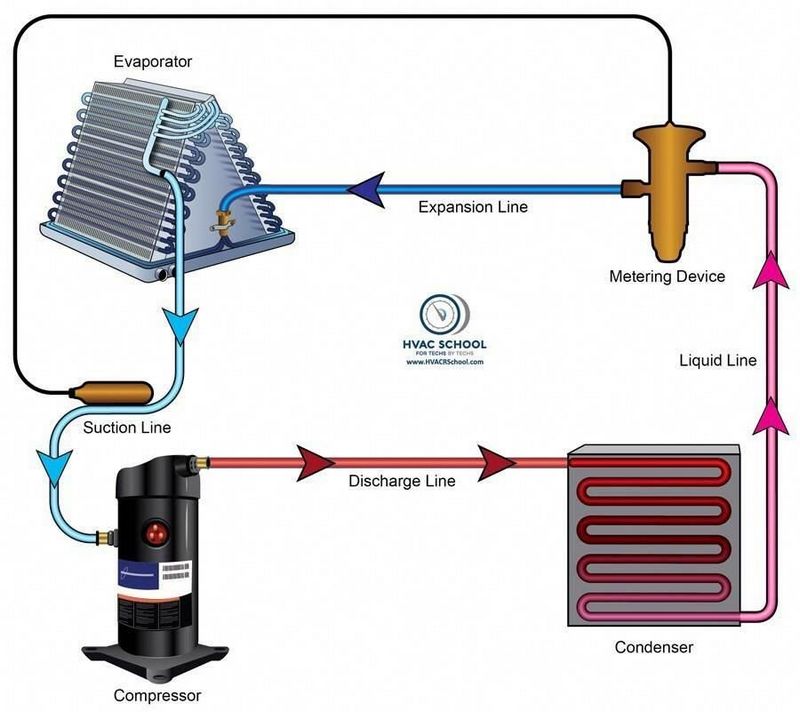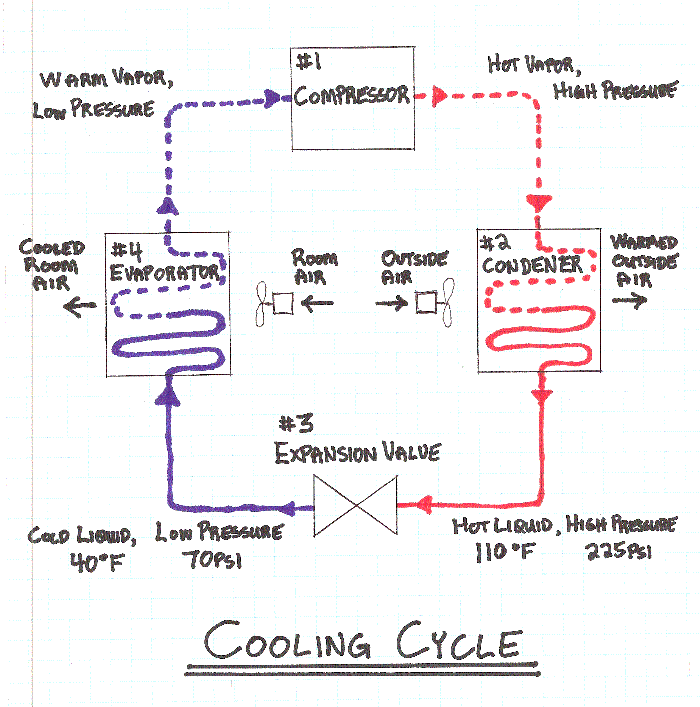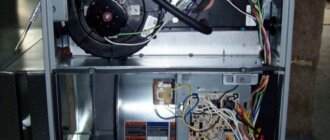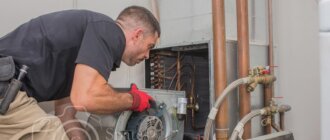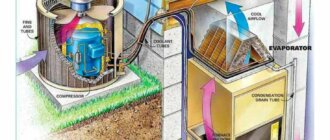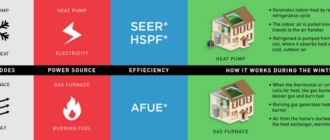Hvac basic knowledge
When it comes to understanding home comfort systems, it’s important to know what HVAC stands for and what it entails. HVAC, which stands for Heating, Ventilation, and Air Conditioning, is a system that controls the temperature, humidity, and quality of the air in your home or building. It combines all three functions into one system, making it a crucial component for maintaining a comfortable and healthy indoor environment.
HVAC systems are designed to provide thermal comfort and acceptable indoor air quality. The HVAC system in a house or building typically consists of various components, including a heating system, a cooling system, ventilation equipment, and control systems. These components work together to regulate the temperature, circulate the air, and remove moisture and pollutants from the indoor environment.
Ventilation is a key aspect of HVAC systems, as it ensures the proper exchange of indoor and outdoor air. Ventilation helps remove odors, moisture, and contaminants from the air, while also replenishing the oxygen supply. Air conditioning, on the other hand, helps cool and dehumidify the indoor air, making it more comfortable during hot and humid weather.
Understanding how HVAC systems work is essential for homeowners and building owners alike. By knowing the basics, you can better maintain and troubleshoot your system, improving its efficiency and extending its lifespan. So, whether you’re looking to install a new HVAC system or simply want to have a better grasp of how it operates, this article will provide you with the knowledge you need.
Key Components of HVAC Systems
The acronym HVAC stands for Heating, Ventilation, and Air Conditioning. HVAC systems are essential in maintaining a comfortable indoor environment by regulating temperature, humidity, and air quality. Understanding the key components of an HVAC system is crucial for homeowners and building occupants to ensure the system works efficiently and effectively.
- Heating: One of the primary functions of an HVAC system is to provide heating in cold climates. This is typically achieved through a furnace, heat pump, or boiler that heats the air or water, which is then distributed throughout the building via ductwork or radiators.
- Ventilation: Ventilation refers to the process of bringing fresh air into the indoor environment while removing stale air. Proper ventilation helps maintain good indoor air quality by diluting pollutants and controlling humidity levels. HVAC systems often include air filters and ductwork to facilitate the ventilation process.
- Air Conditioning: Air conditioning is responsible for cooling the indoor environment during hot weather. It involves the use of a compressor, condenser, evaporator, and refrigerant to remove heat from indoor air and transfer it outside. The cooled air is then circulated back into the building through ducts or vents.
- Thermostat: The thermostat acts as the control center of the HVAC system. It allows users to set the desired temperature and controls the operation of heating and cooling equipment accordingly. Modern thermostats are often programmable and can be accessed remotely through smart devices.
- Ductwork: Ductwork is a network of tubes that distribute airflow throughout the building. It plays a crucial role in delivering heated or cooled air to different rooms or areas. Properly designed and installed ductwork ensures efficient airflow and even temperature distribution.
- Air Filters: Air filters are an essential component of HVAC systems as they help trap dust, pollen, and other airborne particles. Clean air filters improve indoor air quality by preventing these particles from circulating within the building. Regular filter replacement or cleaning is necessary to maintain system efficiency and prolong its lifespan.
Understanding the key components of HVAC systems provides homeowners and building occupants with insights into how these systems work and the importance of regular maintenance. By ensuring proper operation and maintenance of HVAC systems, individuals can enjoy a comfortable and healthy indoor environment throughout the year.
How HVAC Systems Work
HVAC stands for Heating, Ventilation, and Air Conditioning. It refers to the technology used for indoor and vehicular environmental comfort.
The HVAC system consists of various components that work together to provide a comfortable indoor environment by controlling temperature, humidity, and air quality. The main components of an HVAC system include:
- Heating: The heating component of the system is responsible for raising the temperature of the air in the winter months. This can be achieved through various methods, such as using a furnace or a heat pump.
- Ventilation: The ventilation system ensures the exchange of fresh air with stale air. It helps to remove odors, moisture, and contaminants from indoor spaces. This is achieved through the use of exhaust fans and intake vents.
- Air Conditioning: The air conditioning component of the HVAC system is responsible for cooling the air during hot weather. It involves the use of a compressor and refrigerant to remove heat from the air and circulate cool air throughout the space.
The HVAC system works by drawing in air from the surrounding environment and passing it through the various components for conditioning. Here is a step-by-step breakdown of how the HVAC system works:
- The air is drawn in through the return vents, which are strategically placed throughout the building.
- The air then passes through the air filter, which helps to remove dust, pollen, and other contaminants.
- The conditioned air is then pushed through the heating or cooling components, depending on the temperature requirements.
- The air is then circulated throughout the space using a network of ducts and vents.
- Finally, the conditioned air is released into the room through the supply vents.
The HVAC system continuously monitors the temperature and humidity levels in the space and adjusts the heating, ventilation, and air conditioning components accordingly to maintain a comfortable indoor environment. It also helps to improve indoor air quality by removing pollutants and controlling humidity levels.
In conclusion, HVAC systems are an essential part of any building, providing heating, ventilation, and air conditioning to ensure a comfortable and healthy indoor environment. Understanding how these systems work can help in designing and maintaining efficient HVAC systems.
Types of HVAC Systems
HVAC stands for Heating, Ventilation, and Air Conditioning. It refers to the technology used to provide a comfortable indoor environment in both residential and commercial buildings.
HVAC systems are designed to control the temperature, humidity, and air quality within a space. They work by using a combination of heating, ventilation, and air conditioning techniques.Getting into the HVAC trade requires a combination of formal education, hands-on training, and experience. While a degree or certification is not always a requirement to enter the field, it can significantly improve job prospects and earning potential.“Hvac basic knowledge”
There are several types of HVAC systems commonly used in buildings:
- Split System: This is the most common type of HVAC system, consisting of an outdoor unit and an indoor unit. The outdoor unit contains the condenser and compressor, while the indoor unit contains the evaporator coil and the blower. The two units are connected by refrigerant lines.
- Package Unit: In this type of system, all the components of the HVAC system are housed in a single unit. This unit is typically placed on the roof or on a concrete slab outside the building. It is commonly used in commercial buildings where space is limited.
- Heat Pump: A heat pump is a type of HVAC system that can both heat and cool a space. It works by transferring heat from one place to another, using refrigerant as the medium. Heat pumps are more energy-efficient than traditional heating and cooling systems.
- Ductless Mini-Split: As the name suggests, this type of system does not require ductwork. It consists of an outdoor unit and one or more indoor units, connected by refrigerant lines. Each indoor unit is equipped with its own thermostat, allowing for individual temperature control in different zones of the building.
- Geothermal System: This is a more eco-friendly type of HVAC system that uses the heat from the earth to heat and cool a building. It involves burying a series of pipes underground, which circulate a mixture of water and antifreeze. This system is highly efficient but can be expensive to install.
- Radiant Heating: This system uses radiant heat to warm the floors, walls, or ceilings of a space. It can be installed using electric radiant panels, hot water tubing, or hydronic systems. Radiant heating provides a more even and comfortable heat compared to traditional heating systems.
In summary, HVAC systems are essential for providing a comfortable and healthy indoor environment. Understanding the different types of HVAC systems will help you choose the most suitable option for your building.
Energy Efficiency in HVAC Systems
In today’s world, energy efficiency is a top priority in all aspects of life. The same goes for the field of heating, ventilation, and air conditioning (HVAC). Understanding HVAC systems and their energy efficiency is crucial for both building owners and homeowners.
First, let’s define HVAC. HVAC stands for heating, ventilation, and air conditioning. It refers to the technology and systems used to control the indoor environment, including temperature, humidity, and air quality.
So, how does an HVAC system work? Well, it’s quite simple. An HVAC system collects air from inside a building, treats it to either cool or heat it, and then circulates it back into the space. This process allows the HVAC system to maintain a comfortable and healthy indoor environment.
When it comes to energy efficiency, HVAC systems play a significant role. Energy-efficient HVAC systems can help reduce energy consumption, lower utility bills, and minimize the environmental impact. Let’s explore some ways to improve energy efficiency in HVAC systems:
- Proper system sizing: Ensuring that the HVAC system is correctly sized for the building is essential. An oversized system will result in frequent cycling, which can waste energy, while an undersized system may struggle to meet the cooling or heating demands.
- Regular maintenance: Regular maintenance and inspections of the HVAC system can help improve energy efficiency. Clean filters, properly lubricated components, and calibrated thermostats can all contribute to optimal system performance.
- Upgrading to energy-efficient equipment: Old and outdated HVAC equipment tends to be less efficient. Upgrading to energy-efficient models can significantly improve the system’s energy performance.
- Sealing and insulating: Properly sealing and insulating the building envelope can prevent air leakage and ensure that conditioned air stays inside. This reduces the workload on the HVAC system, improving energy efficiency.
- Utilizing programmable thermostats: Programmable thermostats allow users to set temperature schedules based on occupancy. This can help reduce energy consumption by adjusting the temperature during unoccupied periods.
By implementing these energy-efficient practices, HVAC systems can operate more effectively, resulting in energy and cost savings. Building owners and homeowners should also consider consulting with HVAC professionals to ensure their systems are optimized for energy efficiency.
In conclusion, energy efficiency in HVAC systems is vital for cost savings and environmental sustainability. Understanding and implementing energy-efficient practices can maximize the performance of HVAC systems, providing a comfortable indoor environment while minimizing energy consumption.
Benefits of Regular HVAC Maintenance
Regular HVAC maintenance is crucial for the proper functioning and longevity of the HVAC system in your house. HVAC stands for heating, ventilation, and air conditioning. As the name suggests, it is a system that controls the temperature, humidity, and air quality within a building.
Here are some key benefits of regular HVAC maintenance:
-
Improved Efficiency: Regular HVAC maintenance ensures that the system operates at its maximum efficiency. This can result in lower energy consumption and reduced utility bills. A well-maintained HVAC system will be able to heat or cool your home more effectively and evenly.
-
Extended Lifespan: Proper maintenance helps prolong the lifespan of your HVAC system. Regular inspections, cleaning, and tune-ups can prevent major issues from occurring and can catch small problems before they become costly repairs. With regular maintenance, you can avoid premature system failure and the need for a full replacement.
-
Enhanced Indoor Air Quality: HVAC systems play a crucial role in maintaining the air quality in your home. Regular maintenance includes cleaning or replacing air filters, which can reduce the amount of dust, allergens, and pollutants circulating in your home. This is especially important for people with allergies or respiratory conditions.
-
Energy Savings: A well-maintained HVAC system uses less energy, resulting in lower energy bills. Without regular maintenance, the system may have to work harder to achieve the desired temperature, leading to increased energy consumption. Regular maintenance, such as cleaning coils and checking refrigerant levels, can optimize the system’s performance and save you money in the long run.
In conclusion, regular HVAC maintenance is essential for optimizing the performance and efficiency of your HVAC system. It can extend its lifespan, improve indoor air quality, and result in energy savings. By investing in regular maintenance, you can enjoy a comfortable and healthy living environment while saving money on utility bills.
Common HVAC Problems and Solutions
Understanding common problems with HVAC (heating, ventilating, and air conditioning) systems is crucial for homeowners and building managers. HVAC systems are responsible for maintaining indoor comfort by regulating temperature, humidity, and air quality. When problems arise, it can lead to discomfort, health issues, and increased energy costs. Here are some of the most common HVAC problems and their solutions:
-
Insufficient cooling or heating: If your HVAC system is not adequately cooling or heating your space, it could be due to a variety of reasons, including dirty air filters, blocked airflow, or a malfunctioning thermostat. Solution: Check and clean or replace air filters regularly. Ensure that vents are not blocked by furniture or obstacles. If the issue persists, contact a professional HVAC technician.
-
Strange noises: Unusual noises coming from the HVAC system can indicate loose components, worn-out belts, or a malfunctioning motor. Solution: Inspect the system for any visible issues, such as loose parts or belts, and tighten or replace them if necessary. If the noises persist, contact a professional for further inspection and repair.
-
Foul odors: A strong, unpleasant odor emanating from the HVAC system could be a sign of mold, mildew, or a dead animal trapped in the ductwork. Solution: Inspect the system for any visible signs of mold or mildew and clean the affected areas. If the smell persists, it is recommended to contact a professional to identify and eliminate the source of the odor.
-
High energy bills: If your energy bills are consistently higher than usual, it could indicate inefficiencies in your HVAC system. Solution: Check for air leaks around windows and doors and seal them properly. Ensure that your HVAC system is properly sized for your space to avoid overworking it. Regular maintenance, including cleaning coils and checking refrigerant levels, can also improve energy efficiency.
-
Uneven temperature: If different areas of your home or building have significantly different temperatures, it could be due to poor insulation, ductwork issues, or an imbalanced HVAC system. Solution: Inspect the insulation in your home or building and ensure that it is properly installed. Check the ductwork for any leaks or blockages and seal or clean them accordingly. Balancing the HVAC system by adjusting dampers and registers can also help distribute air evenly.
By addressing these common HVAC problems promptly, homeowners and building managers can ensure optimal comfort, energy efficiency, and indoor air quality. Regular maintenance and professional inspections can help prevent these issues and prolong the lifespan of the HVAC system.
Choosing the Right HVAC System for Your Home
When it comes to selecting the right HVAC system for your home, it’s important to understand what HVAC stands for. HVAC stands for Heating, Ventilation, and Air Conditioning. This acronym encompasses the various systems and processes that are responsible for maintaining a comfortable indoor environment.
Before diving into the specifics of HVAC systems, it’s helpful to first understand the basics of ventilation. Ventilation is the process of exchanging indoor air with fresh outdoor air to maintain a healthy living environment. In the context of HVAC systems, ventilation plays a crucial role in removing pollutants, controlling moisture levels, and ensuring proper air circulation.
Now that we have a clear understanding of ventilation, let’s dive into the different components and types of HVAC systems. There are various types of HVAC systems available, ranging from simple standalone air conditioning units to complex centralized systems that provide heating, cooling, and ventilation to an entire building.
The most common type of HVAC system is the split system, which consists of an outdoor unit and an indoor unit. The outdoor unit contains the compressor and condenser, while the indoor unit houses the evaporator coils and air handler. This type of system is typically used for cooling and heating individual rooms or small spaces.
For larger properties or buildings, central HVAC systems are a popular choice. These systems utilize a network of ductwork to distribute conditioned air throughout the entire building. Central HVAC systems are more complex and require professional installation and maintenance.
The function of an HVAC system is to control the temperature, humidity, air quality, and air movement within a space. By utilizing a combination of heating, cooling, and ventilation systems, HVAC systems can create a comfortable and healthy living environment.
When selecting the right HVAC system for your home, it’s crucial to consider factors such as the size of your property, your climate, and your budget. An improperly sized HVAC system can result in inefficiency, poor performance, and higher energy costs.
In addition to the size and climate considerations, it’s essential to choose a reputable HVAC contractor for the installation and maintenance of your system. Professional expertise and regular maintenance can ensure that your HVAC system operates efficiently and effectively for years to come.
| Property Size | Consider the square footage of your home to determine the appropriate size of the HVAC system. |
| Climate | Take into account your climate to determine whether you require more heating or cooling capabilities. |
| Budget | Set a budget for your HVAC system and consider the long-term energy costs. |
| HVAC Contractor | Choose a reputable HVAC contractor for proper installation and regular maintenance. |
In conclusion, when choosing the right HVAC system for your home, it’s crucial to understand the basics of ventilation, the components of HVAC systems, and the factors that need to be considered. By taking these factors into account and working with a professional HVAC contractor, you can ensure that your home has a reliable and efficient HVAC system that meets your specific needs.
Installing an HVAC System
In the world of heating, ventilation, and air conditioning (HVAC), the acronym “HVAC” stands for “heating, ventilation, and air conditioning”. HVAC systems are responsible for maintaining a comfortable indoor environment by controlling the temperature, humidity, and air quality of a building.
So, what exactly does an HVAC system do? It regulates the heating and cooling of a space, ensuring that the temperature is kept at a comfortable level year-round. Additionally, it provides ventilation by circulating and filtering the air to remove impurities and maintain a healthy indoor air quality.
Now, let’s delve into how a typical HVAC system works. It consists of various components, including a furnace, heat pump, air conditioner, ductwork, vents, and thermostat. These components work together to achieve the desired indoor climate.
The furnace or heat pump generates heat during the colder months, which is distributed throughout the building via ductwork. On the other hand, during the warmer months, the air conditioner removes heat from the indoor air and releases it outside, providing a cooling effect.
The ventilation system helps to exchange fresh outdoor air with stale indoor air, ensuring proper air circulation. This is important for maintaining a healthy indoor environment and preventing the buildup of pollutants, allergens, and moisture.
The thermostat acts as the control center of the HVAC system, allowing users to set the desired temperature and customize the operation of the system. It monitors the temperature and activates the heating or cooling equipment as needed.
When installing an HVAC system, several factors need to be considered. These include the size of the space, insulation levels, energy efficiency requirements, and local building codes. It is crucial to hire a professional HVAC contractor who can assess these factors and recommend the most suitable system for your needs.
Overall, an HVAC system plays a vital role in creating a comfortable and healthy indoor environment. Whether it’s a residential, commercial, or industrial setting, understanding the basics of HVAC systems is essential for ensuring optimal comfort and efficiency.
Understanding HVAC System Ratings
When it comes to the HVAC ventilation system, it is important to understand the ratings associated with it. HVAC stands for heating, ventilating, and air conditioning, and it plays a crucial role in maintaining a comfortable indoor environment.
The main function of the HVAC system is to provide ventilation and air conditioning in residential, commercial, and industrial buildings. It can control the temperature, humidity, and air quality to create a comfortable living or working space.
So, what do the ratings mean? HVAC ratings are used to measure the performance and efficiency of the system. Understanding these ratings can help you make an informed decision when choosing an HVAC system.
The most common rating you will come across is the SEER (Seasonal Energy Efficiency Ratio) rating. This rating measures the efficiency of the air conditioning system. The higher the SEER rating, the more energy-efficient the system is.
Another important rating is the HSPF (Heating Seasonal Performance Factor) rating. This rating measures the efficiency of the heat pump in heating mode. Similar to the SEER rating, a higher HSPF rating indicates a more energy-efficient system.
Other ratings you may come across include EER (Energy Efficiency Ratio), AFUE (Annual Fuel Utilization Efficiency), and COP (Coefficient of Performance). Each rating provides information on different aspects of the HVAC system’s performance.
To summarize, HVAC system ratings are important in determining the efficiency and performance of the system. When choosing an HVAC system, consider the SEER, HSPF, and other ratings to ensure you are selecting a system that meets your needs and is energy-efficient.
Tips for Troubleshooting HVAC Issues
When it comes to HVAC (which stands for heating, ventilation, and air conditioning) systems, understanding how they work and being able to troubleshoot common issues can save you time, money, and unnecessary frustration. Here are some tips for troubleshooting HVAC issues:
- Check the thermostat: Make sure the thermostat is set to the desired temperature and functioning properly. Sometimes, the issue may be as simple as a dead battery or incorrect settings.
- Inspect the air filters: Clogged or dirty air filters can restrict airflow and reduce the efficiency of your HVAC system. Check and replace the filters regularly to ensure proper airflow and improve indoor air quality.
- Inspect the outdoor unit: If your HVAC system has an outdoor unit, make sure it is free from debris, such as leaves, dirt, or grass clippings. A blocked outdoor unit can hinder proper airflow and lead to system malfunctions.
- Check the circuit breaker: If your HVAC system is not turning on, check the circuit breaker to ensure it hasn’t tripped. Reset the breaker if necessary, and if it continues to trip, consult a professional technician.
- Listen for unusual noises: Unusual noises like grinding, banging, or squealing coming from your HVAC system can indicate a mechanical issue. If you hear any unusual noises, it’s best to contact a professional technician for a thorough inspection.
- Check for leaks: Inspect your HVAC system for any visible leaks, such as water or refrigerant leaks. Leaks can cause system inefficiencies and potentially damage the system components. If you find a leak, contact a professional technician to repair it.
- Inspect the air vents and ductwork: Ensure that the air vents are not obstructed by furniture or other objects that may block airflow. Additionally, inspect the ductwork for any visible damage or leaks.
- Consider the age of your HVAC system: As HVAC systems age, they may become less efficient and more prone to issues. If your system is old and constantly experiencing problems, it may be worth considering replacing it with a newer, more energy-efficient model.
Remember, while troubleshooting HVAC issues can be helpful in some cases, it’s important to have a professional technician inspect and diagnose complex or persistent problems. Regular maintenance and servicing of your HVAC system can also prevent many issues from arising in the first place.
Future Trends in HVAC Technology
The HVAC industry has seen significant advancements in technology over the years. With the growing demand for efficient and sustainable solutions, the future of HVAC technology holds even more promise. Here are some exciting trends to look out for:
- Smart HVAC Systems: As homes become smarter, so too will HVAC systems. Smart thermostats can learn user preferences and adjust temperature settings accordingly, resulting in energy savings. Furthermore, these systems can be controlled remotely through mobile apps, allowing users to manage their HVAC system from anywhere.
- Energy Efficiency: With a greater emphasis on sustainability, the HVAC industry is focusing on developing more energy-efficient systems. This includes the use of advanced insulation materials, optimized airflow designs, and energy recovery ventilation techniques. Energy-efficient HVAC systems not only reduce carbon footprint but also provide long-term cost savings for homeowners.
- Integration with Renewable Energy Sources: To further reduce dependence on traditional energy sources, HVAC systems are being integrated with renewable energy technologies such as solar power. This allows for the generation of electricity to power the system, resulting in reduced reliance on the electrical grid.
- Improved Indoor Air Quality: The importance of clean indoor air cannot be understated, especially in highly populated areas. Future HVAC systems will feature advanced air filtration and purification technologies to remove pollutants and allergens from indoor spaces. These systems will help maintain a healthy and comfortable environment for occupants.
- Use of Artificial Intelligence: Artificial intelligence (AI) is making its way into HVAC systems, enabling more accurate and efficient control. AI algorithms can analyze various data points, such as weather conditions and occupancy patterns, to optimize HVAC system performance. This ensures that the system operates at peak efficiency while meeting user comfort requirements.
- IoT Integration: The Internet of Things (IoT) is transforming various industries, and HVAC is no exception. IoT integration allows for seamless connectivity between different devices and systems within a building. HVAC systems can communicate with other smart devices, such as lighting and security systems, to create a fully automated and efficient living environment.
- Advanced Controls and Sensors: HVAC systems of the future will feature advanced controls and sensors to provide more precise regulation of temperature, humidity, and air quality. These sensors can detect variations in these parameters and adjust the system settings accordingly, resulting in superior comfort and energy efficiency.
With these future trends in HVAC technology, the industry is moving towards more sustainable, efficient, and intelligent solutions. As technology continues to evolve, HVAC systems will play a key role in creating comfortable and healthy indoor environments while minimizing environmental impact.
HVAC Maintenance and Safety Tips
Proper HVAC maintenance is essential for the efficient functioning of your heating, ventilation, and air conditioning systems. Regular maintenance helps to keep your HVAC system running smoothly, reduce energy costs, and improve indoor air quality. Here are some important maintenance and safety tips to keep in mind:
1. Schedule Regular HVAC Inspections
It is important to schedule regular inspections by a qualified HVAC technician. They can check and clean the various components of your HVAC system, including filters, coils, and ducts. Inspections can help detect any potential issues early on and prevent costly repairs down the line.
2. Replace Air Filters
Dirty air filters can restrict airflow and reduce the efficiency of your HVAC system. Regularly replacing air filters is crucial for maintaining good indoor air quality and optimal system performance. Consult your system’s manual to determine the recommended frequency for filter replacements.
3. Keep Outdoor Units Clean
If you have an outdoor HVAC unit, it is important to keep it clean and free from debris. Regularly remove leaves, grass, and other debris that may accumulate around the unit. This will ensure proper airflow and prevent damage to the system.
4. Clean Vents and Registers
Regularly clean the vents and registers throughout your home to prevent dust and debris buildup. Blocked vents can restrict airflow and reduce the efficiency of your HVAC system. Use a vacuum or a damp cloth to clean the vents and registers.
5. Check Thermostat Settings
Ensure that your thermostat is set to the appropriate temperature and mode for your comfort needs. Adjusting the temperature settings based on the time of day and occupancy can help save energy and reduce utility costs.
6. Be Aware of Warning Signs
Pay attention to any unusual sounds or smells coming from your HVAC system. These can be signs of potential issues that require immediate attention. Contact a professional technician if you notice anything out of the ordinary.
7. Practice HVAC Safety
When performing any DIY maintenance or repairs on your HVAC system, always prioritize safety. Turn off the power to the system before starting any work and follow the manufacturer’s instructions. If you are unsure or uncomfortable, it is best to hire a professional technician.
8. Consider Professional HVAC Maintenance Plans
Many HVAC companies offer maintenance plans that provide regular inspections and maintenance for your system. Consider investing in a professional maintenance plan to ensure your HVAC system remains in good working condition.
By following these HVAC maintenance and safety tips, you can extend the lifespan of your HVAC system, improve energy efficiency, and enjoy clean and comfortable indoor air.
FAQ:
What is HVAC and what does it stand for?
HVAC stands for Heating, Ventilation, and Air Conditioning. It refers to the system that provides heating and cooling to a building or space, as well as controls the indoor air quality.
How does an HVAC system work?
An HVAC system works by heating or cooling the air and then distributing it throughout a building using ductwork. It also helps to control and maintain the indoor humidity levels. The system consists of various components, including a furnace or heat pump, an air conditioner, ductwork, and thermostats.
What is the purpose of an air filter in an HVAC system?
The air filter in an HVAC system is responsible for trapping dust, pollen, and other airborne contaminants, thus improving the indoor air quality. It helps to protect the system from dirt buildup and extends its lifespan. Regularly changing or cleaning the air filter is important for efficient operation of the HVAC system.
What is the difference between a furnace and a heat pump?
A furnace is a heating system that uses fuel (such as gas or oil) to generate heat, while a heat pump uses electricity to transfer heat from one place to another. Furnaces are typically used in colder climates, while heat pumps are more efficient for mild to moderate climates.
Why is regular maintenance important for an HVAC system?
Regular maintenance helps to ensure the efficient and reliable operation of an HVAC system. It helps to detect and fix any potential issues before they turn into major problems. Maintenance also helps to improve the system’s energy efficiency and extend its lifespan. It is recommended to have a professional HVAC technician perform regular maintenance at least once a year.
What are some common problems with HVAC systems?
Some common problems with HVAC systems include insufficient heating or cooling, poor airflow, strange noises, foul odors, frequent cycling, and high energy bills. These issues can be caused by various factors, such as a malfunctioning thermostat, clogged air filters, leaky ducts, or refrigerant leaks. It is advisable to consult a professional HVAC technician to diagnose and fix these problems.
How often should I change the air filters in my HVAC system?
It is generally recommended to change the air filters in an HVAC system every 1 to 3 months. However, the frequency may vary depending on various factors, such as the type of filter used, the level of air pollution in the area, and the number of occupants in the building. It is important to check the air filter regularly and replace it when it appears dirty or clogged.
